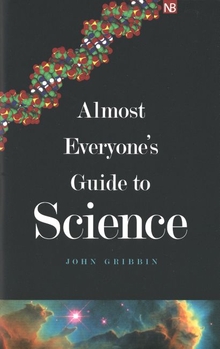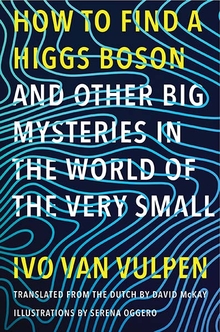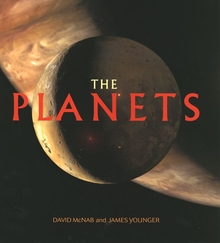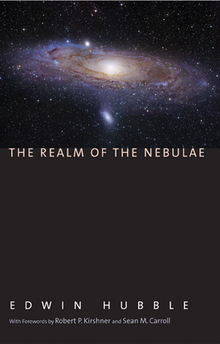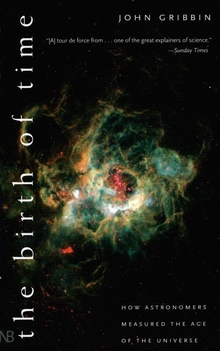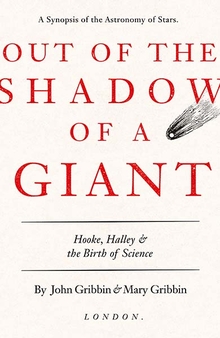Almost Everyone's Guide to Science
WARNING
You are viewing an older version of the Yalebooks website. Please visit out new website with more updated information and a better user experience: https://www.yalebooks.com
The Universe, Life and Everything
John Gribbin
Modern scientific inquiry has developed over the past 400 years, turning away from the belief that the world is governed by magic and the supernatural and emerging instead as a coherent worldview in which everything fits together. This worldview, says Gribbin, is the greatest achievement of the human intellect. With eloquence and clarity he relates what scientists have learned about the nature of things, conveying the excitement of their discoveries as they investigate our place in the universe.
A selection of Doubleday Select Science Book Club
"Perfect for teens seeking an accessible overview to the world of modern science."—Booklist
"To learn about a proton , a platypus, or a pulsar, readers can turn to almost any encyclopedia. But for some understanding as to how modern science fits everything from quarks to quasars into one seamless whole, readers will find no better guide than Gribbin. . . . Shorn of its mathematical complexity, that enterprise yields remarkable secrets—from the dynamics of continental drift to the structure of neutron stars—even to readers of ordinary intelligence and training. Perhaps even more important, Gribbin demystifies the process through which scientists come to know what they know, explaining with lucid examples the scientific method for constructing and testing new theories. It is a good thing that Gribbin provides a list of titles for further reading because readers will close this volume eager to explore the literature of science."—Booklist
“A lively, clearly written, intelligent tour of modern science ranging over about 30 orders of magnitude on the size scale, starting at the level of the atom and culminating at the far reaches of our universe. . . . .Almost Everyone’s Guide to Science was written for nonscientists, and for this audience the book succeeds brilliantly. . . . Almost Everyone’s Guide to Science is, in short, a delightful read and a fascinating introduction to science and the scientific method at the dawn of the 21st century.”—Rudy M. Baum, Chemical and Engineering News
“More up-to-date [than Asimov]; less ranting than Dawkins, and better pitched than Hawking.”—Steven Poole, Guardian
"Prepared readers willing to invest time in the book will benefit from Gribbin's context and come away with a much-improved ability to interpret the natural world around them. . . . Almost Everyone's Guide to Science . . . will reward those who wish to see a composite picture of scientific research at the end of the century that has found mankind peering further into inner and outer space than ever before."—Eric Berger, Houston Chronicle
"Gribbin steps back to show the broad perspective of what science knows about the universe, from the subatomic level up. . . . He smoothly introduces anecdotes about the scientists responsible for various theories and discoveries, and draws usefully on everyday experience to illustrate his material. And while [Gribbin] provides sufficient detail to give the various subjects immediacy, his eye is always on the big picture—how the world fits together and what it means to each of us. A definitive treatment of the subject, clearly and elegantly written. If you're going to own just one general science book, you'd do well to make it this one."—Kirkus Reviews (Starred Review)
"John Gribbin is a very dependable guide, to nearly all of science, for almost everyone. There are still important mysteries, and great discoveries to be made, but in fact modern science has given us a pretty good grasp of how the world works. If you managed to miss all that while you were growing up, and would like to do a little belated catching up, this book is not a bad place to start."—David Goodstein, New York Times Book Review
"Informative. . . . A good bet for the would-be weekend scientist who favors breadth over depth and wants to know a lot in little time."—Publishers Weekly
“For those adults who daydreamed through their grade-school science classes, Almost Everyone’s Guide to Science offers a second chance. John Gribbin provides a concise, easy-to-understand overview of the scientific fields where most of today’s action is taking place—particle physics, chemistry, molecular biology, evolution, environmental sciences and cosmology. ; Reading this book should educate you enough to comprehend just about any new developments in these fields that are likely to occur in the next 20 years. . . . This book truly is a guide to science for almost everyone.”—Lynn Yarris, San Jose Mercury News
“A complete overview of all major scientific disciplines presented in a way that offers something for everyone. . . . The discussion flows almost seamlessly from one topic to the next, providing even the most experienced scientist with new insights into the profound connections among the disparate scientific disciplines. . . . This book is a wonderful overview of all that science has achieved in the past 400 years. It belongs in ‘almost everyone's library.'"—Science Books & Films
“Without rarified mathematics and without dumbing down his material, Gribbin has written a useful guide that any thoughtful layman could read, understand, and have a fair sense of the major up-to-date findings, arguments, and speculations in quantum physics, evolution, astronomy, and astrophysics. . . . General science writing at its best. And it rewards the patient reader who wants to better understand how the universe works.”—Tom Bowden, Tech Directions
“Well worth having.”—Jon Turney, The Independent
“A breathtaking overview of physics, chemistry, earth sciences, and biology, put together with consummate skill. . . . Full of memorable insights.”—Russell Stannard, Times Educational Supplement
"Engaging."—Gregory Mott, Washington Post
“The author leads us through the miracles and mazes of chemistry, biology, geophysics, and cosmology, explaining how it all fits together. ; Without complex mathematics, the weekend scientist can understand the dynamics of modern science and be inspired to explore further.”—Elvita Landau, Public Library Association
Publication Date: August 11, 2000

